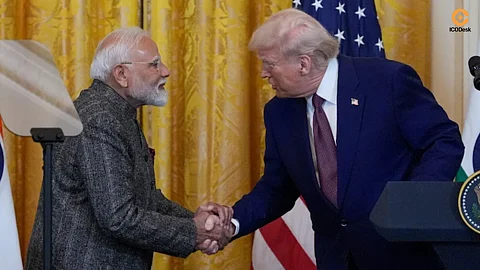

India is intensifying efforts to secure a more advantageous trade agreement with the United States than the one currently in place with Indonesia, as July 31‑August 1 looms—the deadline for reciprocal tariff notices.
India has proposed tariff ceilings below 20%, aiming for a cut that would give it a regional edge over peers such as Indonesia (19%) and Vietnam (20%)
President Donald Trump has emphasized that the Indonesia pact, which slashed tariffs from 32% to 19%, serves as a template for future deals, including one with India. US trade officials have already issued letters to over 150 countries outlining new tariff regimes.
These regimes generally fall within a 10–15% range. More significant trading partners like the EU, Japan, and now India are negotiating separate, individual agreements. With reciprocal tariffs set to ramp up on August 1, negotiators from both nations are pushing for a deal that avoids high punitive duties.
New Delhi is adamant that any US‑India deal must deliver tariffs lower than those for Southeast Asian nations. Indian officials, speaking anonymously, indicate they will seek tarifff ceilings below 20%, and possibly target the mid‑teens or even sub‑10% territory to solidify a competitive advantage.
In exchange, India has offered sweeping concessions, including zero tariffs on American industrial goods if the US reciprocates and increases purchases of Boeing aircraft. It has also proposed modest openings in select agricultural sectors, while steering clear of politically sensitive areas, such as dairy and grains.
Commerce Minister Piyush Goyal’s delegation is leading the fifth round of talks in Washington, with both sides focusing on non‑controversial sectors such as automobiles, processed foods, and chemicals.
Indian industry has responded cautiously to the ongoing trade negotiations. Importers of American walnuts, almonds, electronics components, and apparel are holding off on shipments. Many are also delaying investment decisions.
These delays are intended to align with potential duty cuts and new market-access clauses. Meanwhile, analysts warn that without structural concessions—especially on agricultural openness and GM crops—the deal may only result in a basic ‘mini-deal,’ leaving deeper issues unresolved.
With less than two weeks remaining, both governments appear committed to a deal—but only if it secures near‑parity or better terms than those offered to Indonesia and Vietnam.
Trump is expected to deliver letters outlining India’s tariff rates, effectively finalizing the deal announcement.
Stakes remain high: failure might see India subject to the full 26% tariff previously floated by the US. Conversely, striking a deal could enhance bilateral trade, boost exports across pharmaceuticals, chemicals, aerospace, and offer geopolitical wins for both sides.